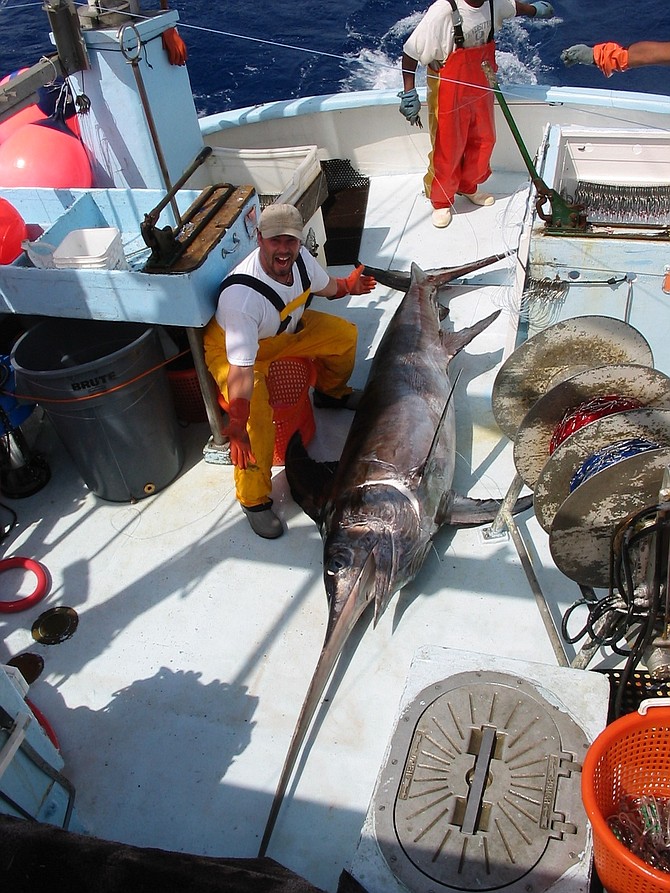 Facebook
Facebook
 X
X
 Instagram
Instagram
 TikTok
TikTok
 Youtube
Youtube

Little do most anglers know there are scientists in Oceanside who provide fish resource information to agencies such as National Oceanographic and Atmospheric Administration, U.S. Fish and Wildlife Service, and the state’s Department of Fish and Wildlife.
Chugey Sepulveda at the Pfleger Institute of Environmental Research, on Coast Highway 101, talks about local swordfish: “Swordfish landings have declined over the years,” said Sepulveda, but not because of dwindling stocks, rather, according to several angler organizations, because of a continuous decline in fishing along California’s coastline, partially due to increasing regulations and off-limits areas.
“Swordfish are widespread and found in every ocean on the planet,” said Sepulveda. “One of our missions is to tag swordfish and identify where they go and who catches them. Because swordfish have the potential to travel thousands of miles in a single year, commercial fishing in less-regulated countries puts pressure on the swordfish populations.”
Although usually a commercial catch in which one swordfish can bring a $2000–$3000 payday, most San Diego recreational ocean anglers have yet to catch one on a rod and reel. Having fished the area for over 35 years, Ron Casapula, a member of the Oceanside Senior Anglers fishing club where Sepulveda recently spoke, says he’d love to catch one.
“I never even seen one caught,” said Casapula. Sepulveda says it’s a real challenge, but it is something quite possible.


Little do most anglers know there are scientists in Oceanside who provide fish resource information to agencies such as National Oceanographic and Atmospheric Administration, U.S. Fish and Wildlife Service, and the state’s Department of Fish and Wildlife.
Chugey Sepulveda at the Pfleger Institute of Environmental Research, on Coast Highway 101, talks about local swordfish: “Swordfish landings have declined over the years,” said Sepulveda, but not because of dwindling stocks, rather, according to several angler organizations, because of a continuous decline in fishing along California’s coastline, partially due to increasing regulations and off-limits areas.
“Swordfish are widespread and found in every ocean on the planet,” said Sepulveda. “One of our missions is to tag swordfish and identify where they go and who catches them. Because swordfish have the potential to travel thousands of miles in a single year, commercial fishing in less-regulated countries puts pressure on the swordfish populations.”
Although usually a commercial catch in which one swordfish can bring a $2000–$3000 payday, most San Diego recreational ocean anglers have yet to catch one on a rod and reel. Having fished the area for over 35 years, Ron Casapula, a member of the Oceanside Senior Anglers fishing club where Sepulveda recently spoke, says he’d love to catch one.
“I never even seen one caught,” said Casapula. Sepulveda says it’s a real challenge, but it is something quite possible.
Comments